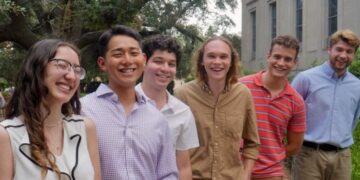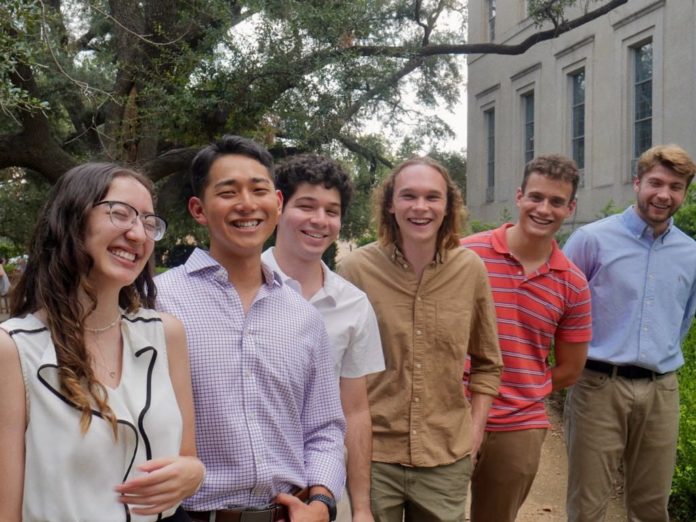By Mariah Bennett | Staff Writer
The Blockchain Collaborative, a student organization, debuted this semester with a mission to help the next generation of innovators develop into both technical and fundamental leaders on emerging technology and information security.
Blockchain is defined as a system of recording information that makes it difficult or impossible to change, hack or cheat a system. This is also what makes cryptocurrency work; an example of cryptocurrency is bitcoin.
“Blockchain is a seminal work in computer science,” Houston junior Nathan Galindo, who serves as the organization’s co-president and head of engineering, said. “It will change the world forever, even though it might not seem like it at the moment.”
Nairobi, Kenya, senior Nathan Hennigh, who serves as the organization’s co-president and head of research, said students should develop an understanding of blockchain on a conceptual level, including how it works and why it matters.
“We want to demystify blockchain, to just have our club be a public education for really anybody with any experience — zero or super experienced,” Hennigh said. “We really see blockchain as the future in pretty much every industry.”
The organization has also set a mission to make the world a better place, according to its website.
“We are realizing our vision by advancing the blockchain community through our passions for research, education and engineering,” the website reads.
The organization co-opted an already existing club at Baylor, the Baylor InfoSec Club, and debuted its rebranding this semester as well.
According to Hennigh, meetings occur every Tuesday, and he and Galindo alternate who leads on a week-to-week basis.
Hennigh said when he leads, he explains what blockchain is conceptually, giving a basic understanding of how it works, its applications, how it affects them and what its future looks like.
Conversely, Hennigh said when Galindo leads, he tackles more of the technical side.
“This Tuesday, when we get done with our meeting, I’m going to be holding a workshop that teaches students how to build applications on the blockchain itself using programming languages like Rust and TypeScript,” Galindo said.
Hennigh said he had knowledge about blockchain since high school but got really into it at the end of 2020.
Galindo said he was also introduced to blockchain in high school and got even more into it in 2020 while doing an internship in which his firm did research related to blockchain.
“That told me that blockchain technology is not a fad,” Galindo said. “I had a lot of respect for the presidents of the firm, and it inspired me to do my own research into blockchain technology.”
Hennigh said he also had personal experience with blockchain, and it has become important to him due to the impact of his experiences, specifically in East Kenya. He said there are about a million people in Kenya who aren’t officially registered. Hennigh said this means they don’t have access to any government programs or traditional financial systems, creating many problems.
Cardano, a peer-reviewed blockchain platform, is a proof-of-stake with a mission to “bank the unbanked,” Hennigh said.
“They’re trying to give digital identities to everybody in the country, to more easily … give them access to financial systems, either directly through the government or through just the global crypto market,” Hennigh said.
Hennigh said he currently runs a business in Kenya, and one of the people he is working with has a 20% annual loan — unsustainable for an economy trying to spur startups and new businesses.
“With access to global financial systems through cryptocurrency … that could be completely eliminated, and fair rates could be easily established,” Hennigh said.
Galindo said the organization likes to keep its doors open for anyone who is interested in joining.
“We’re trying to bridge that gap in education and awareness,” Hennigh said.
To learn more about the organization and what it does, students can check out the Blockchain Collaborative’s Discord.
(function(d){
var js, id = ‘facebook-jssdk’;
if (d.getElementById(id)) {return;}
js = d.createElement(‘script’);
js.id = id;
js.async = true;
js.src = “//connect.facebook.net/en_US/all.js#xfbml=1”;
d.getElementsByTagName(‘head’)[0].appendChild(js);
}(document));





